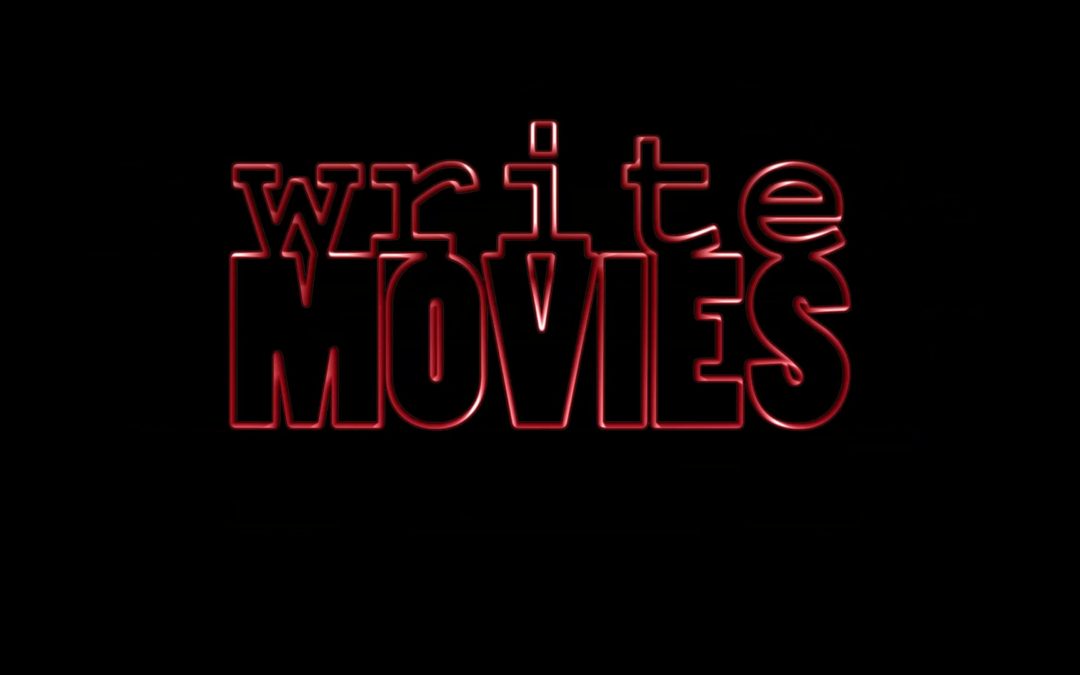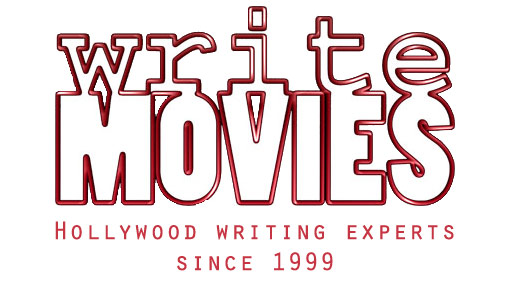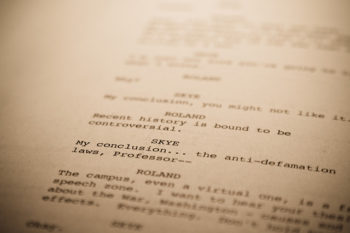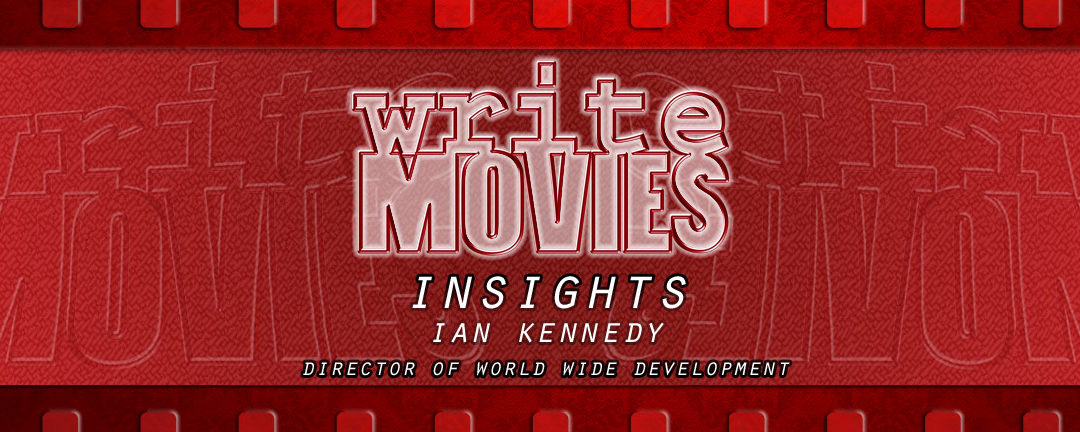
by John | Feb 18, 2019 | Updates
Feature films tend to get most of the glory among filmmakers, but that doesn’t mean we should ignore short film as a medium! In a new series of Insights articles, Ian Kennedy looks at the benefits of writing in this format. Here, we take a look at how to structure a short film.
In the first article in this series, we looked at why you would want to write a short film – but once you’ve decided to do so, what’s the next stage? There are a lot of advantages to making a short, but how are you supposed to fit a story into such a short number of pages? Well, before you start coming up with ideas, you might actually want to think about how to structure a short film first…
Two vs Three-Act Structure
When writing a feature film, a classic three-act structure is usually the way to go. It basically looks like this:
- Act 1 – Setup. Here you introduce your characters and world, and get the story rolling.
- Act 2 – Conflict. This is where most of the story happens, and where things stand in the way of the protagonist getting what they want.
- Act 3 – Resolution. The characters must overcome the final hurdle, defeat their enemies, and win the day… or lose it.
So for example, in Star Wars, Act 1 sees Luke Skywalker on his home planet of Tatooine, Act 2 has him trying to rescue Princess Leia from the Death Star, and in Act 3 he must defeat the Empire once and for all.
When writing a short film, it’s still a good idea to aim for this structure – but there’s also another alternative. For short films, you can also use a structure that only has two acts – a structure that doesn’t work for a longer film at all! A story with a two-act structure is quite simple, since it has the same basic structure as a joke:
- Act 1 – Setup…
- Act 2 – Punchline!
In a two-act structure, you basically cut out the middle. You make a promise to the audience in the first act, and then fulfil that promise in the second – this has the advantage of asking them to connect the dots between the two themselves, which makes them involved and ultimately rewards them for being invested.
But whichever structure you use, the real key to writing a successful short is to trust your audience that you don’t have to explain everything to them. Use our unconscious knowledge and expectations to shortcut as much exposition and world-class building as possible.
So in conclusion, when making a short film, you need to match your concept to the structure. You don’t have to use three acts in short format because there’s another option; if your concept is something simple that functions like a joke, with a setup and a punchline, then two acts will also work. And above all, let the audience fill in the bits of the story there’s not enough time for, so that you can keep your short screenplay… well, short!
Take a look at our other Writing Insights articles here for great hints and tips on crafting your scripts!

by John | Oct 19, 2018 | Highlights, Interviews, Updates
In Part One of our exclusive article in conversation with Steven Knight, the writer-director spoke about how he began his career and about the rise of TV drama. Now, in Part Two, we find out about some of his influences and future plans…
Steven explained that PEAKY BLINDERS is based on stories of his parents and uncles, many of which he heard while around his blacksmith father while he was young. Once the BBC took an interest, things moved quickly. With series 1 complete, Steven was looking at potentially making 4 or 5 series of PEAKY BLINDERS.
PEAKY BLINDERS uses some CGI, but mostly uses derelict locations that aren’t about to be knocked down (one key location is the street where Ringo Starr was born!). There was resistance to setting PEAKY BLINDERS in Birmingham (UK) because of the unglamorous accent, but Knight insisted on retaining that authenticity – he believed that we should be telling our own stories of places like Birmingham.
The basic premise of LOCKE (starring Tom Hardy) was a journey from Birmingham to London, where someone starts out with everything and ends up with nothing – exploring how that could happen. If the cost is low enough, you can get creative freedom to run a project your way. LOCKE knocked CAPTAIN AMERICA off number 1 in terms of revenue per screen! It was on vastly less screens of course, but that was still very promising. Knight was determined that the character in that film should be the most ordinary person possible.
He explained that you have to write a three page outline for studios, however unlikely the script was to end up that way. Knight prefers not knowing where a story is gonna go. He writes, then goes back to the start every day and works through from there.
Knight has accidentally become the poster-boy for Birmingham’s drives to move to the next level in its drive to become a major player in global culture. He intends to build a major sound stage in Birmingham as London’s major studios are fully booked, with a ‘halo effect’ of businesses based around it, and from this to also create a scene where live theatre can lead to movies being made.
Ian Kennedy’s conversation with Steven Knight turned out lots of interesting information about the inner working of the industry. If you haven’t read it yet, why not take a look at Part One by clicking here?

by John | Oct 12, 2018 | Highlights, Interviews, Updates
Our Ian Kennedy was lucky enough to share a table for an evening with Steven Knight, the writer of SERENITY, PEAKY BLINDERS, TABOO, DIRTY PRETTY THINGS, LOCKE, and much more…
Steven Knight says that we’re entering a golden age of TV and film. He explained that the US system is great for writers – it’s unionized and you can make a proper living just from writing. He actually felt that there seems to be a good mystery to you if you DON’T live in LA, as long as you’re prepared to fly out every 6 weeks and do late-night conference calls.
But he explained that the Hollywood system is slow! It takes many years of gestation most of the time. If you persuade a star to be in your project, the studios know they’ll make back a certain many million dollars from it – his film HUMMINGBIRD (with Jason Statham) was in profit before it even got to the cinema. He felt that distributors often underestimate their audience and focus on young males.
Screens are better nowadays so TV drama has risen a lot. Actors like TV and it’s a writer’s medium – writers have control there, unlike other formats. Too many people are involved in making films, telling you something’s not good enough in order to justify their presence and pay. But getting actors to commit beyond series 1 of your TV series is hard because they may get film offers.
Show runners write episode 1 in the US and their team of writers – who’ve developed it with them – do other episodes. Writers rise up through the ranks in the US. British TV writing is more eccentric and individualistic – the US system is more corporate. Theatre writers are good for TV due to their ability with dialogue and are often overlooked.
Steven Knight explained that he had begun his career in the UK by writing plenty for radio, and for comedians including particularly Jasper Carrott, and writing 31 episodes of Carrott’s sitcom with Robert Powell, THE DETECTIVES. Steven was one of the 3 founders of WHO WANTS TO BE A MILLIONAIRE. He also wrote novels for Penguin, and presented DIRTY PRETTY THINGS to the BBC which led to that commission.
Then came AMAZING GRACE, for the 200th anniversary of the end of the slave trade, and EASTERN PROMISES which led from DIRTY PRETTY THINGS. The award nominations that came as a result of these put him into the US system, which he found to be great for writers. He got to direct HUMMINGBIRD which he had also written, and after that wanted to get total control of a project – and he feels that LOCKE vindicated him becoming a director.
Click HERE to check out Part 2 of our conversation with Steven Knight, in which he discusses the influences behind PEAKY BLINDERS, his writing process, and his plans for the future…

by WriteMovies | Jul 23, 2018 | Ian Kennedy, Writing Insights
How to give Producers, Executives and Publishers what they say they want
If you haven’t already, check out Part One here!
In the first part of this article, Ian Kennedy wrote about how stories always show us an important aspect of life. Finding your voice as a writer involves recognizing the aspect you’re exploring and expressing it through the choices you make in your story…
 This is a key tool in focusing your script – to ensure that everything that’s in it shows clear choices by the writer which each reveal different, important and often subtle features of that aspect of life which they’ve decided to explore. What choices you make, and how you present them (i.e. your style, another little-understood word that is often used by producers, execs and publishers), gives your writing its voice.
This is a key tool in focusing your script – to ensure that everything that’s in it shows clear choices by the writer which each reveal different, important and often subtle features of that aspect of life which they’ve decided to explore. What choices you make, and how you present them (i.e. your style, another little-understood word that is often used by producers, execs and publishers), gives your writing its voice.
Here are some examples, they’re all just my own interpretations and summations of the stories mentioned but you’ll get the idea:
- “It’s about how life can be brutal and cruel.” This leads us to: “GAME OF THRONES explores a vivid fantasy world that is brutal and cruel, but where you can thrive if you’re tough enough, whether you’re a man or a woman.”
- “It’s about how life can be threatened by chaos and injustice.” This leads us to: “BATMAN battles a world where criminals and injustice threaten to turn our civilization to chaos.”
- “It’s about how life can be determined by what’s in your heart.” This leads us to: “STAR WARS is about how even the biggest cosmic battles come down to the goodness or darkness in people’s hearts.”
- “It’s about how life can be trapped in eternal childhood for some people.” This leads us to STEPBROTHERS, and other comedies.
- “It’s about how having the biggest brain doesn’t always make life easier.” THE BIG BANG THEORY.
- “It’s about how some people have special abilities or powers and have to decide how to use them right.” – Any superhero story. (Technically, Batman doesn’t have any superpowers, but hey, he’s rich and runs a huge tech-innovation company, so that’s the next best thing.)
For me, it’s both the choice of the aspect of life they want to explore, and the way that they then go on to explore it, which gives the writer their “voice”. Make a conscious choice about the aspect of life you want to explore, the many forms it takes and how you can dramatize those in a way that feels convincing (within the internal logic of your story world – even if that’s a silly or surreal one like MONTY PYTHON), and show how that aspect of life creates dilemmas and issues with important repercussions for your characters and their story world, which you can resolve in a way that shows your conclusions about these questions, and give us an answer we can go away with. As McKee explains, it could be a “This means that this”, a “This means that this, but also means this”, etc.
So for choosing your ending, this comes down to the ‘moral of the story’: your ending should reflect the message and new understanding you want us to take away from the story about life, particularly about ‘life in a world like the one we see in this story’. A message like, “in a world like this, hope always triumphs” or “in a world like this, hope is an illusion”. And you should focus your story on exploring all the features of the aspect of life you’re exploring, and bring us to a conclusion that’s both dramatically, emotionally, and intellectually satisfying conclusion which gives an answer to the big questions you’ve asked.

I believe that all great writing teaches us something about the world, that we didn’t already know or hadn’t understood in this way before. That’s why we want to live out alternative lives through characters and worlds that – if we’re honest – we’d run a mile away from ever having to live as. From their struggles and dilemmas, we take back lessons that enrich and inform our lives, for the better. Even grim stories, enrich our understanding of life for the better, and help resolve us not to let our world turn out that way.
In all of this, the writer’s voice is revealed, and proves itself to be unique. So. Focus your writing on what I’ve explained here, and as you’re applying it to every passage of your work, ask yourself whether your telling of this is fully convincing. Because that’s then the main obstacle to getting greenlit, once you’ve found your voice and proven yourself as a writer.
Develop your voice as a writer with even more in-depth advice from an industry expert: check out our Elite Mentoring and script development services!

by WriteMovies | Jul 13, 2018 | Ian Kennedy, Writing Insights
How to give Producers, Executives and Publishers what they say they want
When they’re answering questions about what they’re looking for in a script or book, you’ll often hear producers, execs and publishers claiming that the vital quality they look for in writing is the unique voice of the writer. I’ve heard this one a lot, and even when asked what they mean, they’ve rarely given any kind of definition to help writers go away with confidence of what they need to do.
But I read hundreds of scripts a year, watch plenty of productions in lots of genres, and help other writers improve their work every day. So here, I think, is a useful definition of where a writer’s voice comes from in their writing, and how they can “own it” and come across as unique and commissionable.
 Firstly, it’s vital to recognize that all stories show us an aspect of life – hopefully an important or stimulating/entertaining one. (Why does nature reward us with laughter for recognizing things that are counterintuitive, ie funny? Because it’s stimulating and therefore expands our understanding of the world – which better equips us to survive and thrive in it. Comedy is not frivolous, it’s vital.)
Firstly, it’s vital to recognize that all stories show us an aspect of life – hopefully an important or stimulating/entertaining one. (Why does nature reward us with laughter for recognizing things that are counterintuitive, ie funny? Because it’s stimulating and therefore expands our understanding of the world – which better equips us to survive and thrive in it. Comedy is not frivolous, it’s vital.)
So, recognizing the aspect of life you’re exploring in your story, can be expressed in one simple sentence:
“It’s about how life can be (funny/perverse/brutal/arbitrary/beautiful/whatever!)”
You should be able to pick a word or phrase to finish that sentence, which encapsulates the theme, tone and underlying logic of what kinds of thing happen in your story and why they happen. This is a key tool in focusing your script – to ensure that everything that’s in it shows clear choices by the writer which each reveal different, important and often subtle features of that aspect of life which they’ve decided to explore.
What choices you make, and how you present them (i.e. your style, another little-understood word that is often used by producers, execs and publishers), gives your writing its voice.
In the second part of this article, Ian looks in more depth about a writer’s voice, the moral of a story, and how to write a great ending…

by John | Jul 2, 2018 | Ian Kennedy, Writing Insights
In films such as AVATAR, THE PLANET OF THE APES, and even the recent BLADE RUNNER 2049, not to mention TV series like WESTWORLD, we are starting to see that more and more humans as bad guys. In cinema’s constant hunt for new villains, stories reflect how we’ve banished the monsters and hazards from our real world, only to find our worst demons in the mirror and deep inside ourselves.
But why are big Hollywood companies risking hundreds of millions on films where the main villain is, well, us? Why would they risk it all, on us paying to go and blame ourselves for what’s wrong in their fictional worlds? Cinemas are usually the place we go for escapism – to get away from what’s happening on the news. If people are causing so much bad news, why would we want to see that amplified on screen?
In AVATAR, we enter an idyllic eco-topia where all nature – however scary – turns out to be symbiotic, and the threat comes from the human invaders who are determined to ravage the planet for its resources. Our protagonist is human – but lives most of his life in the film as a Nav’i and joins with the planet’s forces against the humans.
In the most recent PLANET OF THE APES trilogy, the human-centric story of the 1968 original – which saw humans struggling to survive in an society ruled by apes – is not merely discarded but inverted. We now find ourselves primarily following the ape CAESAR, who fights to lead his people to safety in a world where they are hated and feared by human beings.
And in BLADE RUNNER 2049, Ryan Gosling’s character – like Harrison Ford’s before him, we finally confirm – is the latest in a long string of replicant assassins employed to kill his own kind, to protect humans from the repercussions of their own creations. The story’s sympathies are clearly with the replicants, not the humans, taking the established Blade Runner theme of ‘what it means to be human’ to a new level.

Volcanoes: less often the villain now than humans.
Just watch a news broadcast, and ask yourself ‘who are the villains here?’, and ‘what’s causing the problems here?’. Apart from earthquakes and volcanos, you’ll usually only get one answer: people. Even when the problem is ‘nature’, like fires and hurricanes, we’re slowly having to admit that actually yeah, we are making things worse, putting ourselves in the firing line when we could live in safer places, and even causing many problems in the first place. A constant flow of research articles and bad-news stories tells us that we humans have enormous influence over the world around us, even if we can’t control it or ourselves.
This is reflected – unsubtly – in AVATAR. Like the earthly colonialists of recent centuries, the humans in AVATAR arrive under the guise of exploitative “trade”, backed up by formidable military intent. Like Vikings and colonialists of our world in past centuries, they are determined to get their way – whether peacefully or by violence. They come to a thriving tropical word, and pillage it for their own needs – sound familiar? The devastation caused by the humans is felt equally by the native species, the animals and even the plants, and this causes some humans to change sides and help the victims, like how people today try to help ‘save the rhinos’. The rest of the movie is totally told from the side of the natives, who our protagonist joins and even becomes.
In the news, we’ve also seen the tribal biases of the past starting to give way to a more balanced view. News stories used to put us solidly on one side of the important divides of the time (humans good, nature dangerous; ‘Western countries’ good, ‘Eastern countries’ bad; ‘civilization’ good, ‘primitive’ cultures bad…). But decades of peace in most of the world have given us the time to take a better look at ourselves, instead of ganging up together against the ‘other’. In fact, these days the news agenda and emphasis is mostly on the victims of war, crimes and abuse (such as sexual harassment or other cruel things done by ‘bad people’ to ‘innocent people’), and we’re much more suspicious than supportive of our leaders and politicians.
In most countries, the news media now is much more likely than before to take the side of victims, and even to fight to tell their story, rather than helping governments and powerful people cover up their abuses and mistakes – even if it often takes famous cases to bring much more widespread everyday abuses into the public eye, such as the Hollywood sexual harassment revelations focusing on the “big name” perpetrators and victims. In the past, history was always written about ‘great men’ who dominated their times. But these days, we emphathize more with the victim than the powerful aggressor. Filmmakers are using this angle in their films to reflect this concern by giving center stage to the victim of a story as opposed to whoever is causing the damage.
Top filmmakers will take the element of escapism and use it to reflect what is going on in the real world. They’re just tapping into the underlying messages behind our modern world and the news we consume every day. These films work because they tap into what we’re preoccupied with, what we now recognize, or think we understand, about the real underlying logic of our world. Filmmakers and production companies have to respond to our modern fears, expectations, preoccupations and feelings in order to tap in to them, get ahead of the curve, and create a cinematic experience that will stick with us. People who aren’t interested in GAME OF THRONES mostly assume it’s ‘just a fantasy story’, when actually it takes the world of fantasy and spins it, to tell vivid stories about some very modern preoccupations – female empowerment, and the brutality of fate – that they’d probably be a lot more interested in.
Why, though, are we happy to go see a film that villainizes humans rather than the aliens or monsters of past films? Well, nowadays people are more open minded than we used to be – peace makes that possible. Where we used to see other cultures as dangerously different, we can now recognize them as the victims of our own culture and values.
THE DARK KNIGHT trilogy mostly works well as a piece of superhero escapism and a reflection of our fears of domestic chaos and terrorism. AVATAR succeeds with its outlandish sci-fi setting and the eco-allegory about rainforests and nature in a symbiotic but fragile harmony.
So, like us, many Hollywood and filmmakers have recognized that humans are the problem – that we are the only real bad guys in this world, now we’ve crushed the monsters and natural environments that created so many threats to us in the past. They are now using this to tell stories from the point of view of humans’ victims, to create compelling stories where we can empathize with the characters victimized by people like us, and recognize the demons and drives within ourselves that cause problems for others in the world.
Then again, maybe it’s just because humans have got so powerful in our own world that we don’t have many other places to turn when we’re looking for villains and excuses for blockbuster mega-stories. Either way, it works.

by John | Jun 22, 2018 | Writing Insights
“Use the Force, Luke.” It’s one of the most iconic phrases in the history of film – and if you haven’t heard it before, you must have been living on a backwater desert planet for the last forty years.
It also contains a valuable lesson for writers. In our latest Writing Insights article, Edward Smith takes a look at how these four words unlock the secrets of the character arc.
And a quick warning if you’ve been living on that desert planet… This article contains spoilers for the original Star Wars trilogy.
We all want to write memorable characters with plenty of depth, and any writer who knows their craft knows that the key to this is the character arc: a process of change and growth that a character undergoes in the course of the story. A character who changes pops off the page and the screen because they are reacting to the world they inhabit, as real people do, whereas a static character is forever nothing more than a two-dimensional collection of traits.
 Yet change just for the sake of change is not enough. The very best character arcs do something more: they equip the hero with the qualities they need to emerge victorious. If your thoughts just went to every training montage you’ve ever seen, you’re on the right lines, but to maximize this concept it needs to be taken further. Skills and knowledge are one thing, but gaining the wisdom to make use of what they know – that is what makes a character’s journey truly satisfying.
Yet change just for the sake of change is not enough. The very best character arcs do something more: they equip the hero with the qualities they need to emerge victorious. If your thoughts just went to every training montage you’ve ever seen, you’re on the right lines, but to maximize this concept it needs to be taken further. Skills and knowledge are one thing, but gaining the wisdom to make use of what they know – that is what makes a character’s journey truly satisfying.
And this is where we come to our key phrase. “Use the Force, Luke.”
In the original Star Wars trilogy, the character arc is applied brilliantly – and differently – in each of the three films. Luke Skywalker undergoes three arcs, each one concluding in a different fashion, showing us how invaluable it is to fully understand this concept.
Luke starts out as a mere farmboy who could never triumph against the might of the Empire. In the course of his adventures, however, he grows into a hero who is entrusted, in the film’s climax, with the task of destroying the Death Star. Yet even then, even with all he has learned, he comes dangerously close to failure, and it takes a reminder from Obi-Wan Kenobi to make sure he doesn’t repeat the mistakes of those who came before him. “Use the Force, Luke.” Luke now has the wisdom to listen – and is rewarded with victory.
Here we find the character arc used to different effect – in fact, in entirely the opposite manner. After going to train with Jedi Master Yoda, Luke leaves before he is ready despite the warnings of his teacher – and, erm… It doesn’t end well for him. At all. This is fundamentally the tragic form, in which the hero fails to learn what they need to succeed – although unlike most tragic heroes, Luke is lucky enough to escape with his life.
Luke actually has little physical impact on the film’s conclusion. While the Rebellion faces off against the Empire (albeit aided by teddy-bears), Luke is locked in a personal battle with Darth Vader and the Emperor, emerging with a moral victory by having the wisdom to know when to stay his hand. While it doesn’t directly affect what happens elsewhere, his arc is nonetheless satisfying because it has a karmic effect; his moral victory is rewarded within the story by simultaneous success for his friends in the Rebellion.
So what can we learn from this? The original Star Wars trilogy demonstrates how a character arc is not merely about growth, but growth with purpose, giving a character not merely the skills they need but also the wisdom to use them. It also shows how an arc can be used in different ways: to give your protagonist success, disaster, or a moral victory.
So whichever kind of character arc you opt for in your script, you now have all the information you need – just make sure you have the wisdom to use it…










